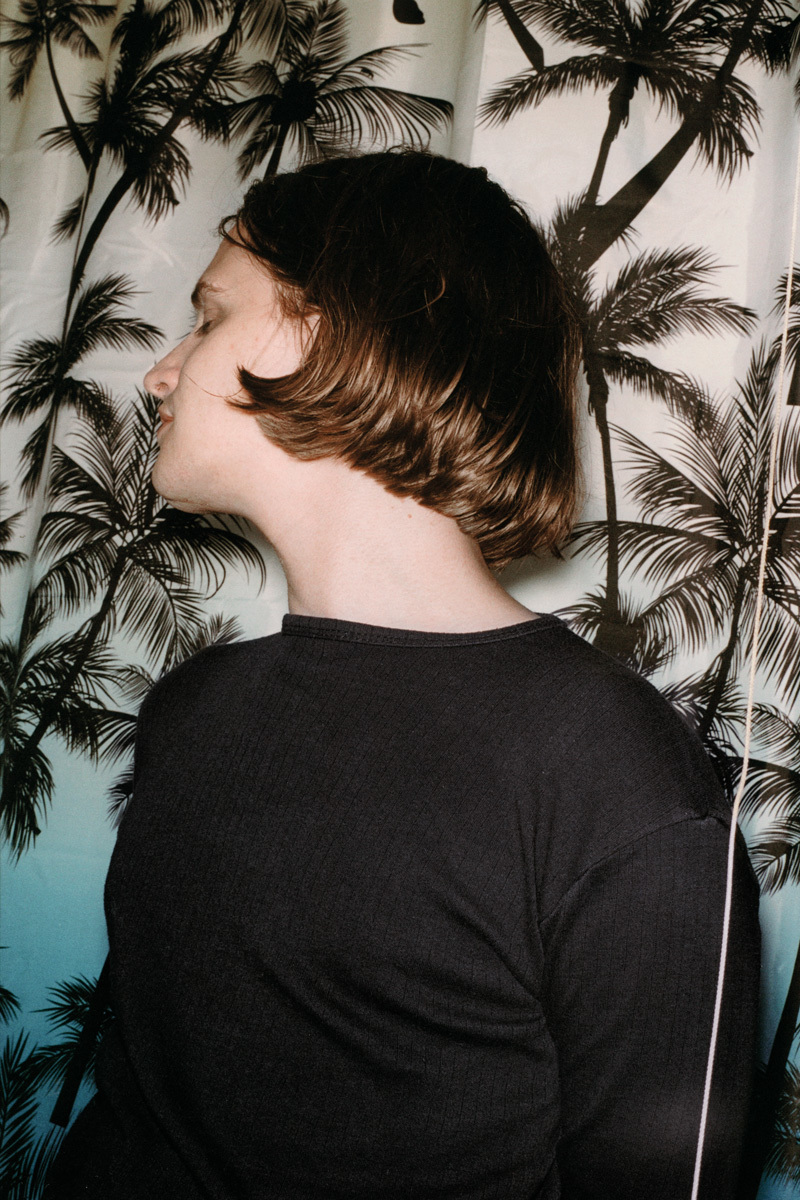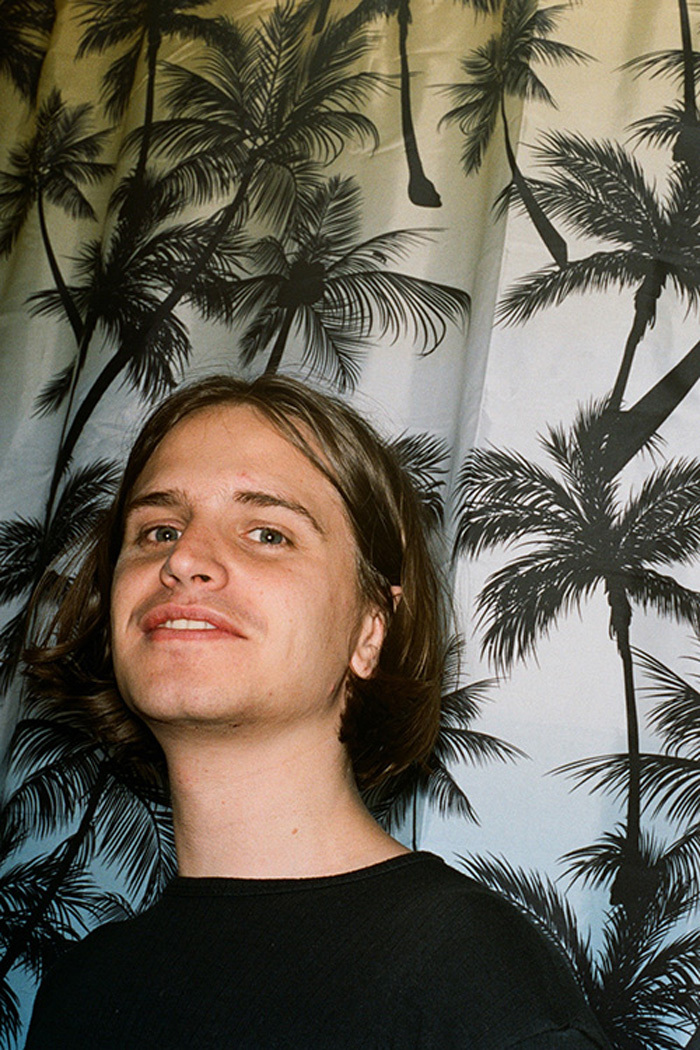In his book Infinite Jest, American New Sincerity (or post-postmodernist) novelist David Foster Wallace stated that “everybody is identical in their secret unspoken belief that way deep down, they are different from everyone else.” His ironic approach to the idea of human desire for social integrity and the lonely trivial episodes of our lives, seen through the “unedited camera” (a new literary style he invented), creates a particular sensation of fragmentation. Inspired by the novelist, Royal College of Art graduate Luke Stevens presented his graduate collection, reminiscing this dystopian sensation.
Visually, Stevens’ work is a gathering of repurposed chairs from his studio, inspired by Argos catalogues and airport waiting rooms. Shown during London Collections Men, part of Fashion East’s MAN, his presentation felt more like performance art than a mere fashion showcase. Somewhere between Tarkovsky’s Solaris and the anxious solitude of Nicolas Roeg’s The Man Who Fell to Earth, Stevens’ employment of the basest of materials such as tinfoil, aluminium tubes and neoprene explored the impact of the environment itself.
His collection, named Cabbages, is intended as an investigation of designed objects, environments, products and clothing within the habitual. Following Wallace’s stamina of everyday simplicity, Stevens’ work reflects the idea of clothing as a form of critical engagement of banal, standardised manufacturing processes. In his work, the empirical meaning of the production process is re-evaluated as interaction between materials, shapes, forms and the feel rather than the actual happening.
Cabbages, he explains, refers to a manufacturing term used to describe garments made from surplus material left in the factory. In a design methodological context, the process itself has enormously influenced the designer’s choice of materials, which were either at hand or pulled directly from his current environment (i.e. scaffolding nets, office chairs, mylar blankets).

Collaborating with sound artist Patchfinder, Stevens put on a sound installation for the RCA show. Each garment was mic’d up using a contact microphone – the sound was then generated through a series of actions performed by a model wearing the clothes, which was then played back into the room. Moving the focus from the garment itself to the surroundings’ visual aspects became an integral part of the designer’s ethos.
Having called the collection “an investigation of garments”, the young designer from Kent explained that he is interested in the position clothing occupies within the everyday; its presence within a range of interactions ranging from the deeply personal to the political, and its relationship to people, products and places. “Because of its position,” he says, “I’m interested in clothing’s potential as a medium with which to engage critically with these themes.”
It’s a rare occasion when someone so young gets so socially involved in the metamodern era we live in, especially in light of recent economic instability in Europe and within fashion as a commercial medium. “I think it’s important for both established and emerging designers to continually question the industry’s structure, its modes of production and distribution, its values and position.”
In the context of art, his approach is defined by the hybridity and intertextuality of “recycled” images from the past; by re-evaluating their impetus within the modern and “original” idea. Seen through digital culture at large, we observe the collapse of boundaries between highbrow and lowbrow, where technologies have been repurposed to adopt a role beyond simply being mediators of certain trends in the form of content. They become generators of ideas themselves – what Luke referred to as his next project. He is working on a collaborative project using the Google Image Search algorithm to auto-generate a text narrative from images of the collection, similarly attempting to move the focus away from the image by presenting the collection in a text based format.
Seeing beyond the literal meaning of visual context is the ultimate source of inspiration for the young Brit, who referred to an ultra chichi washing machine model when asked about his dream fashion show spot (Inside a Hotpoint Ultima S-Line RPD 9467 JGG Front-Loading washing machine).
Merging art and interior design is another aspect of Stevens’ work – he’s currently working on a new project with Takram Design studio for Dirty Furniture magazine. Just like Chalayan once challenged the spatial conformities of the dress – think of that autumn/winter 00 show, when during the chants of Bulgarian folklore singers, models turned chairs into high fashion – Luke’s industrial approach has cultivated a new breed of modern space age that defines fashion as a transmitter between space and time.
Read: Katie Roberts Wood on finding strength, not vulnerability, in femininity.
Credits
Text Desislava Todorova
Photography James Robjant
